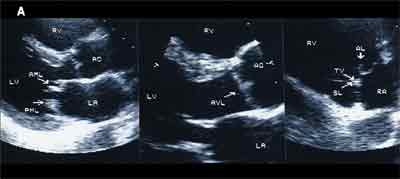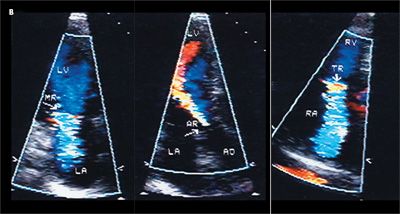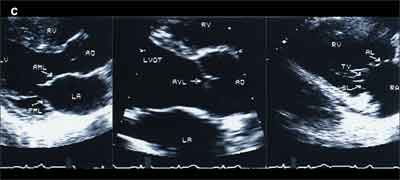- Clinical Technology
- Adult Immunization
- Hepatology
- Pediatric Immunization
- Screening
- Psychiatry
- Allergy
- Women's Health
- Cardiology
- Pediatrics
- Dermatology
- Endocrinology
- Pain Management
- Gastroenterology
- Infectious Disease
- Obesity Medicine
- Rheumatology
- Nephrology
- Neurology
- Pulmonology
Serotogenic Multivalvulopathy With Regurgitations
A 49-year-old woman was referred for evaluation of cardiac valvular dysfunction. Years earlier, she had taken phentermine and fenfluramine for 3 to 6 months for weight loss. She had lost 6.75 kg (15 lb) during that interval without any cardiac symptoms or side effects. She stopped taking the drug on her own.
A 49-year-old woman was referred for evaluation of cardiac valvular dysfunction. Years earlier, she had taken phentermine and fenfluramine for 3 to 6 months for weight loss. She had lost 6.75 kg (15 lb) during that interval without any cardiac symptoms or side effects. She stopped taking the drug on her own.
The patient was 5.4 ft and weighed 68.9 kg (153 lb). Heart rate was 70 beats per minute and regular. Blood pressure was 120/70 mm Hg. A grade 1/6 systolic murmur at the apex, a grade 1/4 early diastolic murmur, and a grade 1/6 systolic murmur at the epigastrium were detected.
An echocardiographic study showed abnormally thickened and rigid mitral, aortic, and deformed tricuspid leaflets (A). Color flow Doppler images showed abnormal regurgitation at all 3 valves without stenosis (B). Peak right ventricular pressure was 26 mm Hg. Left ventricular function was normal (estimated ejection fraction of 60% to 65%). Because no previous echocardiogram-obtained before the patient started taking the drugs-was available, images of normal cardiac valves are shown for comparison (C).

Cardiac valvulopathy has been reported after use of serotonin-like drugs (eg, ergotamine and methysergide) and serotogenic anorectic drugs (eg, fenfluramine, phentermine, and dexfenfluramine).1,2 The pathologic findings in the affected valves excised at surgery or autopsy are identical to those seen in carcinoid valvular disease (ie, thickening, rigidity, and deformity of the valve caused by plaque-like encasement of the leaflet by fibrous tissue), which then leads to valve dysfunction. Both right- and left-sided heart valves can be involved; however, multiple simultaneous valvular dysfunction is less common. This case illustrates multivalvulopathy in a patient in whom only the pulmonary valve was spared.

Infective endocarditis prophylaxis was recommended for this patient and a follow-up cardiovascular evaluation in 1 year.

References:
REFERENCES:
1.
Connolly HM, Crary JL, McGoon MD, et al. Valvular heart disease associated with fenfluramine-phentermine.
N Engl J Med
. 1997;337:581-588.
2.
Weissman N, Tighe J, Gottdiener JS, et al. An assessment of heart-valve abnormalities in obese patients taking dexfenfluramine, sustained-release dexfenfluramine or placebo. Sustained-Release Dexfenfluramine Study Group.
N Engl J Med.
1998;339:725-732.
